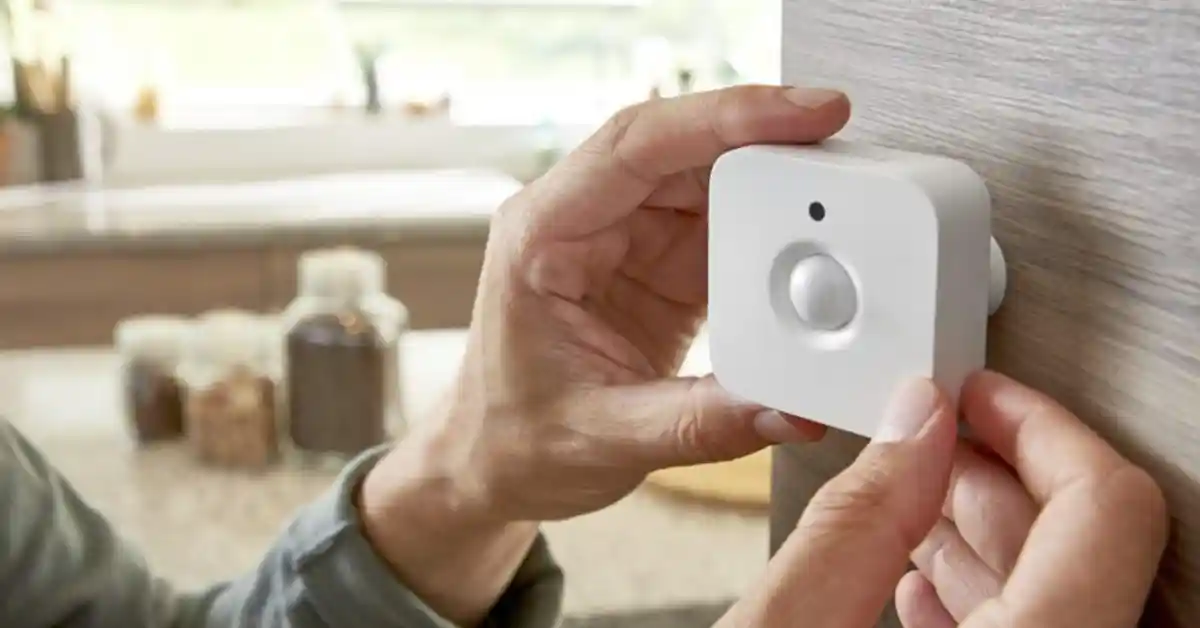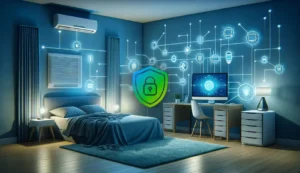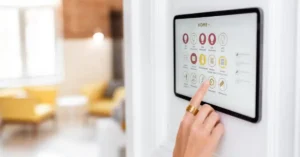Introduction: Why Home Monitoring Is the Core of Smart Security
In today’s world, security is about more than locking doors. Homeowners want to know what’s happening in and around their property at all times. That’s where home monitoring systems come in.
In 2025, monitoring goes far beyond cameras on the front porch. Smart homes now include motion sensors, glass-break detectors, flood monitors, and AI-driven alerts, all connected to your smartphone or security hub. These tools don’t just deter intruders; they also prevent costly damage from water leaks, fires, and environmental hazards. Combined with 24/7 protection, monitoring is now the backbone of modern home security.
What Is Home Monitoring? (Quick Answer)
Home monitoring is the use of smart devices like cameras, motion sensors, and environmental detectors that provide real-time alerts and often integrate with 24/7 professional monitoring services.
This system enables homeowners to track activity, receive instant notifications, and get emergency assistance when needed.
Core Components of a Modern Home Monitoring System
1. Cameras
- Indoor cameras: Keep an eye on children, pets, or elderly relatives.
- Outdoor cameras: Deter burglars, capture video evidence.
- Video doorbells: Let you see and talk to visitors remotely.
- AI features: Facial recognition, package detection, and smart alerts.
2. Motion Sensors
- Detect unauthorized movement indoors or outdoors.
- Can trigger alarms, lights, and camera recordings.
- Adjustable sensitivity to prevent false alerts from pets.
3. Entry & Glass-Break Sensors
- Door and window sensors alert if opened.
- Glass-break sensors recognize sound frequencies of shattering glass.
4. Environmental Sensors
- Smoke & CO detectors: Integrated with alarms for life safety.
- Water leak sensors: Detect floods from pipes, appliances, or roofs.
- Temperature sensors: Alert when freezing temps could burst pipes.
5. Monitoring Services
- Self-monitoring: Homeowner receives alerts via app.
- Professional monitoring: Security center responds, dispatching police or fire services.
- Some hybrid services allow switching between modes.
Benefits of Smart Home Monitoring
- 24/7 security: Round-the-clock protection against burglary, fire, or leaks.
- Evidence collection: Recorded video supports insurance claims and police investigations.
- Remote access: Check your home from anywhere in the world.
- Insurance discounts: Many insurers give 5–15% off premiums for professionally monitored systems.
- Peace of mind: Parents and travelers especially benefit from live monitoring.
Do Home Monitoring Systems Lower Insurance Premiums?
Yes. Insurers know that homes with monitoring devices are less likely to file costly claims. Discounts depend on:
- Monitoring type: Professional monitoring often qualifies for higher savings.
- Devices installed: Cameras, leak detectors, and smoke alarms provide layered protection.
- Provider partnerships: Some insurers partner with brands like ADT, Ring, or SimpliSafe.
Example: A $2,000 annual premium may be reduced by $250 with a comprehensive monitored system.
Leading Home Monitoring Brands in 2025
Cameras
- Ring Stick Up Cam Elite: Affordable, integrates with Ring ecosystem.
- Arlo Pro 5: 4K video, AI alerts, strong wireless battery life.
- Google Nest Cam IQ: Facial recognition, cloud AI features.
Sensors
- Eve Motion Sensor: Works with Apple HomeKit.
- SimpliSafe Motion & Entry Sensors: Easy setup, reliable.
- Aqara Leak Sensor: Budget-friendly flood detection.
Professional Monitoring Services
- ADT Command: Industry leader with advanced AI-assisted dispatch.
- Ring Protect Pro: Affordable, cloud-based, integrates with Ring devices.
- SimpliSafe Monitoring: Flexible plans, no long-term contracts.
Real-World Case Studies
- Burglary Prevention in Texas: An outdoor camera recorded trespassers attempting entry. The system alerted police, preventing loss and damage.
- Water Damage Avoided in Florida: A $50 leak sensor caught a washing machine overflow, preventing $10,000 in water damage.
- Family Safety in California: A smoke detector linked to a monitored alarm system alerted fire services during the night, saving both the family and the home.
Challenges & Limitations
- False alarms: Pets, shadows, or poor calibration may trigger alerts.
- Privacy concerns: Cameras and microphones can be hacked if unsecured.
- Ongoing costs: Professional monitoring and cloud storage add monthly fees.
- Internet dependence: Most devices require Wi-Fi, though some offer cellular backup.
Tips for Choosing a Home Monitoring System
- Start with essentials: Cameras, entry sensors, smoke detectors.
- Add environmental protection: Leak and CO detectors for extra safety.
- Decide on monitoring style: Self-monitoring is cheaper, but professional services offer peace of mind.
- Check insurance benefits: Confirm which devices qualify for discounts.
- Secure your network: Use strong passwords, updates, and encrypted devices.
Key Takeaways
- Home monitoring combines cameras, sensors, and 24/7 services to protect property and people.
- Benefits include security, prevention, and insurance savings.
- Top devices in 2025 integrate AI, automation, and app control.
- Costs vary, but prevention of even one claim pays for the system.
- Professional monitoring offers the highest level of protection and peace of mind.




